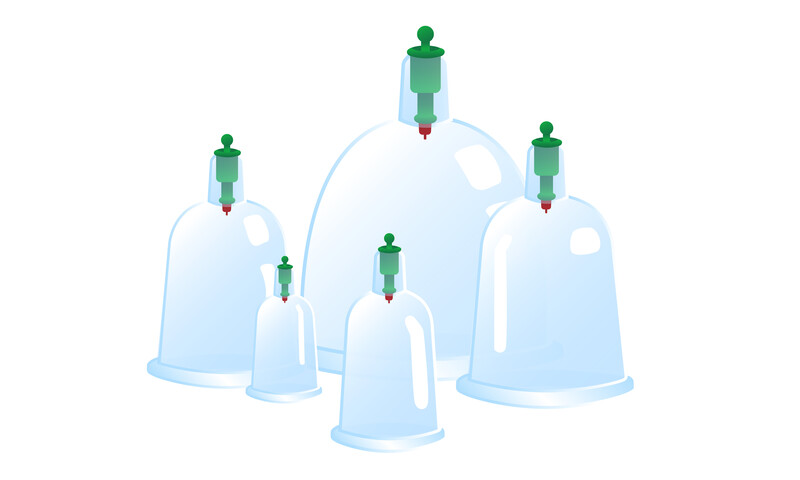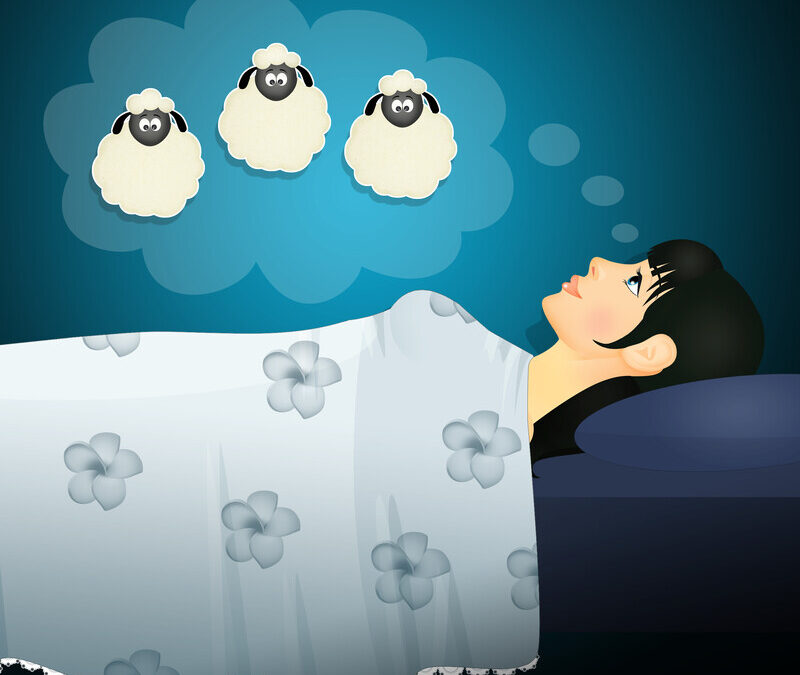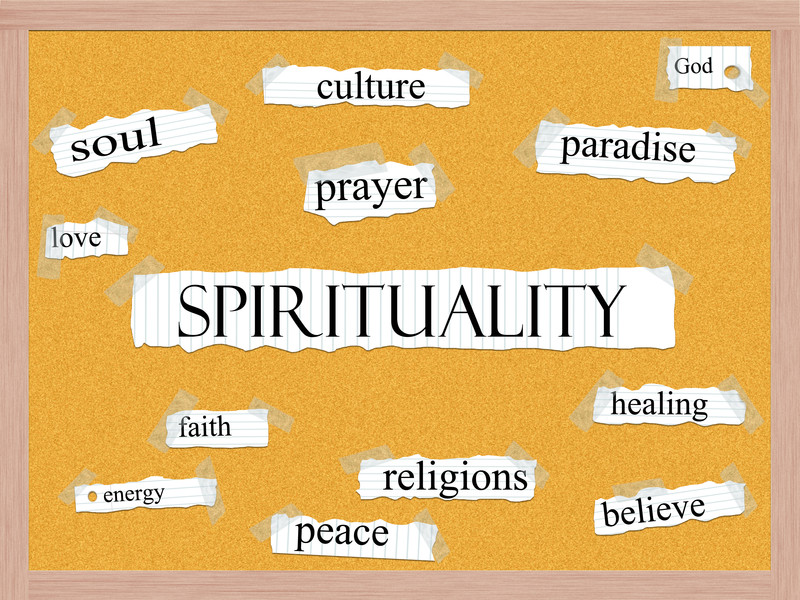
According to the National Institutes of Health (NIH), chronic pain affects more people in this country than diabetes, heart disease, and cancer combined. They also report that it is the most common reason people enter the health care system, and is the leading cause of long-term disability (1). When we read the statistics regarding chronic pain, we realize that it has a tremendous impact on the individual experiencing it, but we don’t usually see beyond that to what it does to the family unit.
Many people who have chronic pain are married, in relationships, have children, or are a part of a family. While the pain in the body may be felt by only those who have the condition, there is no doubt that others in their lives often experience the burden and discomfort, too. Their pain comes from watching someone they love live in pain, while they are helpless to do much about it to bring about relief for them. They can also experience a range of emotions, including resentment, because of the changes that can arise from their family member experiencing the chronic pain. Understanding the issues that can arise is the first line of defense in helping to manage it and keep it from driving a permanent wedge between family members.
Effects of Chronic Pain
The first person who is affected by chronic pain is, of course, the person who is experiencing the condition. The NIH reports that it is often accompanied by such things as fatigue, sleep disturbances, decreased appetite, and mood changes. It can also take a physical toll on the person, limiting their movement, as well as decreasing their flexibility, strength, and stamina. Chronic pain can also make it more difficult for those suffering from it to engage in enjoyable activities, as well as lead them to become disabled and despair (2).
It is easy for those who are experiencing chronic pain to succumb to the many symptoms that it can bring about, leading them to feel isolated and depressed. In fact, the NIH reports that chronic pain and depression are linked, and that chronic pain can worsen depression symptoms (3). It’s estimated that half of those who suffer from chronic pain also suffer from depression (4).
With the number of ways that chronic pain can impact the individual, it is bound to have an effect on the family as well. Not only can those who have experienced this attest to the severity of what can happen, but there has been research conducted to confirm it as well. The Journal of Advanced Nursing reported a study on the effects of chronic pain and the family unit, reporting that the aspects of social relationships that were affected included marital, partnership, sexual activity, contact with friends and relatives, and roles. Further, they found that the chronic pain caused isolation, role tension, marital conflict, reduced sexual activity, and feelings of anger, anxiety, resentment, and despondency in other family members (5).
Impacting the Family
Chronic pain may start with the individual who has it, but there’s a wave effect that follows. If mom or dad suffers from chronic pain, for example, it makes it more difficult for them to get involved with the kids. It may prevent them from playing with them physically, attending their soccer games on the weekends, or lead them to be moody and snap at them for minor incidents.
Children are impacted by a family member experiencing chronic pain, as are spouses and partners. Common issues that arise for them include the one who does not have chronic pain having to take on a bigger role in the household. This may include doing more chores, preparing meals, helping out with the kids, and even working more if the person with the chronic pain is unable to work as much as they used to. Taking on more things like this can lead to an increase of stress in the home, too.
While the person with chronic pain is absorbed by focusing on the pain, and may be experiencing many of the symptoms that result, such as depression and isolation, the family still needs to keep moving forward. Meals still need to be made, sports practices still need to be attended to, and family activities still need to take place, even if they are only the more basic and routine ones. What often happens is that these duties fall more on the shoulders of those who do not have the chronic pain, but this doesn’t always come without consequences either.
Pain Becomes the Focus
Unless families have taken steps to ensure that pain is not what is consistently focused on, it is easy for it to become the focus of the family. Everything will tend to revolve around the pain, such as what the family can do and when they can do it. Not only does it often create resentment and wear on the relationships, but it tests the bonds between people, and can create an emotional distance.
If chronic pain is taking center stage within a family, then there is a good chance that problems will arise, if they haven’t already. Since it leads the person experiencing the pain to give up things and have restrictions, it makes it difficult for the person to be themselves and continue enjoying the things they typically do. It can also lead to arguments, less involvement, and an increase in tension in the home.
Children in the home where a parent suffers from chronic pain may find that they are not able to do things with them that they would like to, such as play sports, carry smaller children, or participate in activities at all times. They may also see that the other parent or someone else steps in to take on duties that the parent would normally do. All of these things can lead to problems within the home and create issues that can come between family members, ultimately driving a wedge between them.
Among couples, it is important to note that chronic pain can take a major toll on the intimacy within the relationship. As the condition remains the focus, it may be too painful for some to engage in sex, or the effect of being depressed may lead the person to not want to be actively involved with their partner in that manner. This alone can lead to resentment, arguments, and take a toll on the couple’s relationship.
Many people experience a decrease in quality of life when they live with chronic pain. Unfortunately, when someone in the home suffers from chronic pain it is a family issue, not an individual one, because the issues surrounding it permeate the entire family. When this happens, there is a decrease in quality of life for everyone, rather than just the person who is living with the chronic pain.
Kid Stuff
Children are especially vulnerable when it comes to having someone in the house who lives with chronic pain. They may see and feel there is a problem, as they also see the effects of the problem, yet they may not actually understand what is going on. They may end up feeling sad, disappointed, or angry, if their parent isn’t as involved or avoids some activities with them.
While they often realize something is going on, it can be a scary time for them in the home. If they begin to see a parent become depressed and isolated, they may even begin to think that it’s something to do with them. They may also see the adults in the family argue about the issue or effects of it, such as financial problems, and yet not have a good understanding of what the issue is or what they can do about it, if anything. Parents may also become irritable, which is something the kids pick up on, because they have the chronic pain, or they have to take on a larger portion of the household duties as a result.
When it comes to the children, it is a good idea for the parents to talk it out with them. Open communication is going to be the best route to helping people work together as a team through this difficult time. It’s also important to do what you can with them when you are able to. There are likely going to be times during the day when you feel better than others, and you can make a point to do things with them during those times.
Here are some things to keep in mind when it comes to talking to children about the family being affected by someone having chronic pain:
- Try to stick to using language that they will understand. This is going to vary depending on their age, of course. Kids will often understand if you explain that mom’s back hurts right now, but she will play with you later. Let them know that the parent experiences a lot of pain and it makes it difficult to do things at certain times, but they will do the things as soon as they are feeling less pain.
- Every child is different when it comes to understanding and processing the information you will provide. Give them the space and ability to process it in their own manner, while still providing them with the amount of information they are comfortable with. If they have questions, try to find an age-appropriate way to answer them so that they will also understand them.
- It’s important that children don’t keep their feelings in and avoid sharing them with their parents. They will feel better and be able to process the situation more effectively if they talk about how they are feeling, as well as sharing their concerns and hopes. Encourage them to share their feelings and be open-minded to listening to them, even if it may be difficult to listen to or it may make you feel a little guilty.
- When they do take the time to share their feelings, be sure to listen carefully to what they are telling you. They need to know that you are listening and that their concerns matter to the family. Try to address their concerns as much as possible.
- Let them know that the chronic pain that you, or the parent in the family, are experiencing has nothing to do with them. Children often have a way of making it about them and they feel as though they have done something to cause the chronic pain situation.
- Reassure them that even though you are in pain and may not be able to do everything with them that you would like to, that you still love them. Let them know you wish you could do those things with them and that maybe someday you will again be able to, but until them you will find other meaningful things to do with them.
- Always let them know that they can come to you to discuss the issue, how they are feeling, or if there are problems. They need to know that this is an ongoing issue that they can discuss at any time if they feel they need to.
- Try to keep their lives as normal as possible. It is important that they feel secure, experience joy, and grow up doing things that kids normally do.
Children are resilient when they are in a family that has open communication and provides a sense of security. They may see the stress and problems that are going on in the house as a result of the chronic pain, so it is important to address these issues with them, keep an open line of communication, and make them a priority.
Dealing Directly
Since living in a home where someone suffers from chronic pain can take a toll on the whole family and the quality of life they live, it is important to deal with the issues at hand. Those families that try to ignore the issue or assume it will work itself out may find that they become increasingly frustrated when it doesn’t happen. For things to get better in this type of scenario, families need to deal with the issue directly and set the tone for how things will go.
The adults in the family will need to make the decision that they want to address the issue and that they do not want the chronic pain to become the focal point of their family. In order for this to be successful, the person who has the pain will have to fully agree and be on board with this. Many people are happy to agree to this, because they want their family to have a good quality of life. However, there are some people who don’t want to do this, because they have created a dependency to the rewards that come to them as a result of having chronic pain.
The rewards that people may get from the pain they experience, secondary gains as they are referred to, include the sympathy, attention, and being able to opt out of some responsibilities. Of course, not everyone will feel this way, but there are plenty of people who do like these secondary benefits and will prefer getting those, rather than making the quality of life for the family the focal point. If this is the case, then it may be time to get a professional counselor involved. Not addressing the problem might lead to the person in pain sabotaging their pain recovery efforts because they like the special treatment they are receiving.
These rewards or gains can become behaviors that reinforce the pain and end up making it more difficult to recover. It creates a mindset that is focused on the pain and rewards, rather than on pain management and doing everything possible to improve quality of life. It’s important to determine the right amount of support to give someone, but there is a fine line when it comes to this issue. Family members don’t want to give so much support that the pain becomes the focus of the family and the person avoids feeling better because of the special treatment, and you don’t want to give so little support that it seems you don’t care or that the person in pain is not getting the assistance they may need.
Another issue that can arise in families that have someone with chronic pain is addiction to medications. According to the American Society of Addiction Medicine, around 259 million opioid pain medication prescriptions are written each year, and 1.9 million Americans live with prescription opioid abuse or dependence. Further, they report that each year there are over 16,000 people who die from prescription pain killer overdoses (6).
Communication is Key
There are many issues that can arise in the home when someone has chronic pain. In order for the family to not be overcome with the issue, it is important that everyone communicate. Whether the pain has become a recent issue or it’s one that has been around for a while, it’s never too late to get started with getting your family back on the right track and living a better quality of life. The best thing to do is start with having an action plan for keeping the family happy.
Your action plan for family happiness and harmony should consider the following areas:
- Not only should the adults in the family communicate about the issue, duties, and their feelings, but so should the children. When everyone has open and respectful communication about the issue, it’s going to help the family deal with it better. The person with the chronic pain should communicate with the family to let them know when they will be able to do certain things, such as playing with the children. These things may need to be planned around when the parent is feeling best, but communicating this information is going to go a long way toward helping to keep harmony in the family.
- Some families may benefit from having counseling, especially if the chronic pain has led to feelings of resentment, affected the couple’s intimacy, or created other problems that are coming between the family members. Seeing a psychologist is a good way to help with pain management and improving quality of life. In a study in the journal Psychology Research and Behavior Management, they report that benefits of including psychological treatments to the management of chronic pain are abundant. They report the benefits include increased self-management of pain, improved pain-coping resources, reduced pain-related disability, and reduced emotional distress-improvements. Additionally, they found that a psychologist can effectively help patients feel more in command of their pain control and enable them to live as normal a life as possible despite the pain (7).
- Support groups. Even support groups that are only for pain patients (and not for family members) can be a big help. Support groups can be a release valve—a place for the person with pain to focus on pain, so that pain doesn’t have to be the focus in their relationships and their families. Support groups often help their members get new perspectives on the problems and issues that come up in the family.
- Pain management strategy. Those with chronic pain need to have a pain management strategy in place. This is what will help the person to work through the pain. It may include things such as pain medications, yoga, meditation, massage, or a number of other medical and complementary treatment approaches that have been selected to help bring pain relief and management. According to the American Psychological Association, chronic pain is both physically and psychologically painful. They report that the persistent pain can lead to an increase in stress that people need to address, and it’s important to become active and engaged (8). It can be beneficial to be distracted from the pain while engaging in activities you find to be fun.
- It’s important that the person experiencing the pain strives to maintain a good attitude. If they have a consistently negative attitude, it can really have an impact on the family and cause emotional problems. Attitudes are often catching, so try to engage in activities that will help improve your mindset, such as meditating, practicing gratitude, and spending time in nature.
- Staying connected. It’s easy for those in pain to withdraw from their normal activities or the things they once enjoyed doing. When this happens, they can lose connections with friends and family members. Make it a point to not let these connections be lost, because there are benefits to keeping a healthy circle of friends and being connected to family outside your home.
- Asking for help. Many people find that men who suffer from chronic pain tend to keep it more to themselves and not ask for help, while women are more outspoken about it and ask for assistance. There’s nothing wrong with either asking for help when it’s needed. It is also important for families to be compassionate toward each other, understanding that those with pain are suffering, and those without it are often experiencing their own kind of suffering brought on by chronic pain the other person is experiencing.
- Part of a good pain management strategy includes acceptance. It is important for a family, including the person with the pain, to accept that there is going to be pain, but that they also want to strive to enjoy their life as much as possible. While the family accepts that pain will be a part of their dynamic, they also work toward living a quality life and doing things together when they are able to. It is necessary for those with chronic pain to avoid the victim mentality and instead focus on finding a variety of coping strategies that will help them through it. Not everything works for everyone, so the person should try a variety of coping strategies until they find a couple that work for them.
When a family chooses to still live a quality life, despite chronic pain being a part of it, they will find more joy and it will be more fulfilling. As the Buddhist thought goes, pain is inevitable, but suffering is optional. Chronic pain may be a permanent part of a family member’s life, but that doesn’t mean that he or she or the whole family needs to suffer because of it. Accepting that it’s going to be there, communicating about the best way to go about handling it, and then working together as a team will put the family unit in the best light for creating bonds and enjoying each other’s company.
Moving Forward
There are many ways for family members to help support the person in their life who has chronic pain. Rather than always waiting on them and allowing them to opt out of engaging in activities, they can encourage them to get more involved and be there with them as they do. While you don’t want to push them into doing something that may be dangerous or cause them more pain, a spouse may find it’s easier to get the person with chronic pain to engage in things like yoga and meditation if they start out doing it with them at their side. Not only does this show support, but it also helps the person get started with some pain management techniques that they may otherwise shy away from.
Chronic pain can have a substantial impact on a family. This is why it is crucial that families pause and carefully decide the direction they will take. By mapping out a course of action, they are going to do a lot toward helping to keep the family bonds together. Family members can never take the pain away for someone, but together families can make bearing the pain more manageable and not let it consume them.
Sources:
- National Institutes of Health. Pain Management. <http://report.nih.gov/nihfactsheets/ViewFactSheet.aspx?csid=57>
- National Institutes of Health. Chronic Pain. <https://www.nlm.nih.gov/medlineplus/magazine/issues/spring11/articles/spring11pg5-6.html>
- National Institutes of Health. Depression and Chronic Pain. <http://www.nimh.nih.gov/health/publications/depression-and-chronic-pain/index.shtml>
- PsychCentral. Living with chronic pain and depression. <http://psychcentral.com/lib/living-with-chronic-pain-and-depression>
- Journal of Advanced Nursing. 1994 Mar;19(3):543-51.
- American Society of Addiction Medicine. Opioid Addiction Disease. <http://www.asam.org/docs/default-source/advocacy/opioid-addiction-disease-facts-figures.pdf>
- Psychology Research and Behavior Management. 011; 4: 41–49.
- American Psychological Association. Coping with chronic pain. <http://www.apa.org/helpcenter/chronic-pain.aspx>







